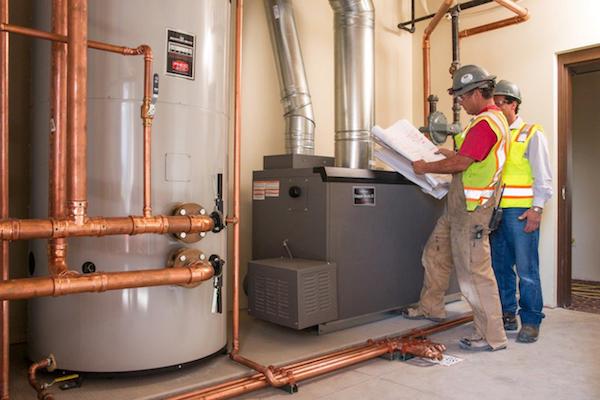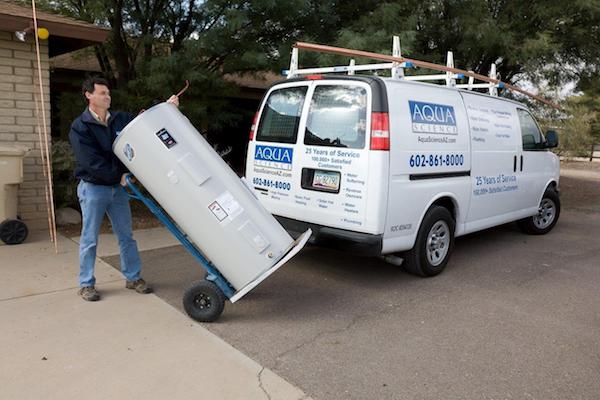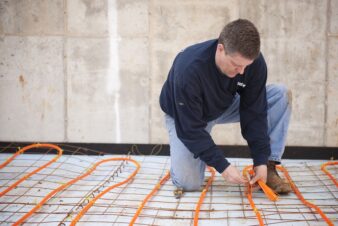 Mechanical Hub recently spoke with Bradford White Corp.’s Bruce Carnevale, president and chief operating officer, about the state of the economy short term, and a bit about the industry in general. Here is an excerpt from the Q&A.
Mechanical Hub recently spoke with Bradford White Corp.’s Bruce Carnevale, president and chief operating officer, about the state of the economy short term, and a bit about the industry in general. Here is an excerpt from the Q&A.
How do you see the short-term economic outlook?
a) Residential Plumbing — This should remain strong, due in part to a good economy and the steady increase in home renovation projects. New home construction levels also remain stable, providing additional residential plumbing opportunities.
b) Commercial Plumbing — Feedback from specifiers, engineers, contractors and wholesalers, as well as key indicators from resources such as the Architectural Index, indicate that the commercial/mechanical contractors are largely backlogged through 2018. Also, it is important to note is that the bipartisan focus on infrastructure, will likely have both a short and long-term positive impact for commercial plumbing work.

c) Residential Hydronics — With the ever-broadening array of residential hydronic products, particularly combi-style options, the economic outlook is positive. Additionally, the same economic trends that will affect residential plumbing in 2018 come into play to enhance the outlook for residential hydronics.
d) Commercial Hydronics — Similar to commercial plumbing, all indications are that the prospects for commercial hydronics will remain solid through 2018. Between currently scheduled workloads and national, state and local infrastructure initiatives, the commercial hydronics outlook should remain healthy well beyond 2018.
What are the top indicators you examine to form these projections?
We aggregate a variety of data to help us arrive at our projections regarding our business and the industry at large. First, we have worked with a leading economist and his team over the past several decades to develop a proprietary trend report that gives us both a national and regional perspective on future sales and growth opportunities. We also examine industry related stock trends and look at data from other sources such as the National Association of Realtors, U.S. Census reports and the Dodge Report, just to name a few. Lastly, we look at these data points relative to the valuable information we get from our specifier, engineer, contractor and wholesaler customers.
What are some trends/factors that look positive—technology, construction, housing starts, units sold, etc.
There are a lot of good signs, most telling of which are the industry statistics that show higher sales, with water heaters in particular being up more than 5% over last year. Construction and housing trends also remain positive for the time being and economic growth is steady. We are also seeing some regional shifts in terms of energy utilization, most notably a move away from fossil fuels to electricity. The positive trend here is that as energy advocates and utility companies work more closely with manufacturers, we can be more responsive in terms of developing and providing the most relevant and efficient products possible to address consumer needs.

Conversely, what are some things that might concern you as you look to the future?
In a heated economy with GDP growing up to 3% and beyond, there could be a tightening of labor markets, increases in material costs, and a more accelerated rise in interest rates. A dramatic rise in interest rates could slow down spending, particularly when it comes to first-time home buyers, a trend that is already a concern as many of these potential home buyers are dealing with significant college debt. We also cannot ignore what’s happening on the global front, as the potential for more international conflicts or disturbances appears to be on the rise.
With year one under the new President in the rear view, in general, and from a company standpoint, how would you review his performance?
From a practical standpoint, his ability to address regulatory issues affecting domestic business growth has been a plus. His administration has also brought about a higher level of cooperation between the regulatory bodies and industry, helping to moderate what were once primarily adversarial relationships. By doing so, we can work together to bring about policies that are ultimately in the best interest of consumers. I think this change alone has had a significant impact on 2017’s economic growth, even more so than the anticipated tax reform benefits. Overall, despite the clumsiness of some of the administration’s messaging that has tarnished their results, the President deserves credit for taking action on the issues he promised would be addressed.
What are some things that directly affect the industry that you would like to see a more concentrated effort?
There should certainly be continued focus on modifying or even eliminating certain regulations that have stifled economic growth, particularity here in the United States. This would help companies like Bradford White, who prefer to keep their manufacturing facilities in this country. Also, a more coordinated effort between industry organizations to address common concerns would be beneficial. Various manufacturers, trade organizations and wholesaler associations are already doing great things on their own, but their combined strength would likely carry greater weight, thus driving quicker, more universally acceptable results. Another area of concentration that we can positively affect together is product training. Manufacturers are steadily increasing their efforts in this area, but doing more to work directly with trade organizations and suppliers on training initiatives would likely bring be more effective.




Join the conversation: